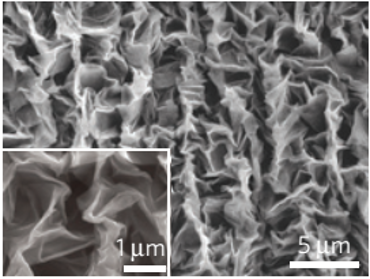(ǂ Equal contributions; * corresponding authors; Tu group members bolded; Google Scholar)
Manuscript in preparation or submitted
[45] Qing Tu, Wenze Yu, Joao Marcelo Lopes, Volker Blum and Stefan Zauscher,* “Interface-Induced Piezoelectricity in Epitaxial Graphene on SiC (0001)”, In Preparation of submission [44] Linying Li, Chia-Kuei Mo, Qing Tu, Yiqun Zhang, Nick Caroll, Ashutosh Chilkoti, Stefan Zauscher, and Gabriel P. López,* “Adsorption of Stimuli-Responsive Biomolecules onto Silica Surfaces: the Effect of Affinity Tag on Surface Rearrangement, Adsorption Kinetics and Equilibria”, in preparation of submission [43] Reza Namakian, Maria Vargas, Qing Tu, Ali Erdemir, Wei Gao,* “Temperature-Induced Phase Transition in 2D Alkylammonium Lead Halide Perovskites: A Molecular Dynamics Study”, submitted [42] Doyun Kim, Dongha Yoo, Chris Sheehan, Andrew Jones, Darrick Williams, Gyu-Chul Yi, Qing Tu, Jinkyoung Yoo,* and Wanyi Nie,* “Perovskite Grown in Gallium Nitride Nanowire Matrix for Stable and High Efficiency X-Ray Detection”, submitted [41] Di Zhang*, Katherine Harmon, Michael Zachman, Ping Lu, Doyun Kim, Zhan Zhang, Nick Cucciniello, Reid Markland, Ken William Ssennyimba, Hua Zhou, Yue Cao, Hao Zheng, Alessandro Mazza, Zach Hughes, Chase Somodi, Ben Freiman, Matt Schneider, Sarah Pooley, Sundar Kunwar, Pinku Roy, Qing Tu, Rodney McCabe, Aiping Chen,* “High-Throughput Combinatorial Approach to the Synthesis of a Lead-Free Relaxor Ferroelectrics System”, submitted [40] Ankit Negi, Liang Yan, Cong Yang, Yeonju Yu, Doyun Kim, Subhrangsu Mukherjee, Andrew H. Comstock, Saqlain Raza, Ziqi Wang, Dali Sun, Harald Ade, Qing Tu,* Wei You,* and Jun Liu,* “Anomalous Correlation between Thermal Conductivity and Elastic Modulus in Two-Dimensional Hybrid Metal Halide Perovskites”, submitted2023
[39] Ali Azmy, Daria Konovalova, Leah Lepore, Alexander Fyffe, Doyun Kim, Lukasz Wojtas, Qing Tu, Minh Trinh, Nourdine Zibouche,* Ioannis Spanopoulos,* “Synthesis and Optical Properties of One-Year Air-Stable Chiral Sb(III) Halide Semiconductors”, Inorganic Chemistry, 2023, 62, 49, 20142–20152 [38] Chih-Wei Wang, Hong Rae Kim, Jared Hampton, Doyun Kim, Qing Tu, Jae-Chul Pyun, and Dong Hee Son,* “Effects of Hole Transporting PEDOT:PSS on Photoemission of Upconverted Hot Electrons in Mn-doped CdS/ZnS Quantum Dots”, Journal of Chemical Physics, 2023, 159, 054703 [37] Mingwan Leng, Nandu Koripally, Junjie Huang, Aikaterini Vriza, Kyeong Yeon Lee, Xiaozhou Ji, Chenxuan Li, Megan Hays, Qing Tu, Kim Dunbar, Jie Xu*, Tse Nga Ng*, and Lei Fang*, “Synthesis and Exceptional Operational Durability of Polyaniline-Inspired Conductive Ladder Polymers”, Materials Horizons, 2023, 10(10), 4354-4364 [36] Doyun Kim, Eugenia S. Vasileiadou, Ioannis Spanopooulos, Xuguang Wang, Jinhui Yan, Mercouri G. Kanatzidis, Qing Tu*, “Unveiling the Fatigue Behavior of 2D Hybrid Organic-Inorganic Perovskites: Insights for Long-Term Durability”, Advanced Science, 2023, 10 (26), 2303133 [35] Vo Kim Hieu Van, Frank W. DelRio, Qing Tu, and Koo-Hyun Chung,* “Friction characteristics of two-dimensional hybrid organic-inorganic perovskites”, Experimental Mechanics, 2023, 63, 1085–1090 [34] Doyun Kim, Eric K. Qian, Daniel G. Chica, Yu-Hsiang Chiang, Mercouri G. Kanatzidis, Qing Tu,* “Mechanical Properties of 2D Semiconductor LiInP2Se6: Implications for Semiconductor Applications”, ACS Applied Nano Materials, 2023, 6(10), 8214–8221 [33] Doyun Kim, Eugenia S. Vasileiadou, Ioannis Spanopooulos, Mercouri G. Kanatzidis, Qing Tu,* “Abnormal In-Plane Thermo-Mechanical Behavior of 2D Hybrid Organic-Inorganic Perovskites”, ACS Applied Materials & Interfaces, 2023, 15, 6, 7919–7927 [32] Weiwei Tang, Taimin Yang, Cristian Morales-Rivera, Xi Geng, Vijay Srirambhatla, Xiang Kang, Vraj Chauhan, Sungil Hong, Qing Tu, Alastair Florence, Huaping Mo, Hector Calderon, Christian Kisielowski, Francisco Robles Hernandez, Xiaodong Zou, Giannis Mpourmpakis, and Jeff Rimer,* “Tautomerism Unveils a Self-inhibition Mechanism of Crystallization”, Nature Communications, 2023, 14 (1), 561 [31] Xiaoyu He, Yao Deng, Decai Ouyang, Na Zhang, Jing Wang, Akshay A. Murthy, Ioannis Spanopoulos, Saiful M. Islam, Qing Tu, Guichuan Xing, Yuan Li,* Vinayak P. Dravid,* Tianyou Zhai,* “Recent Development of Halide Perovskite Materials and Devices for Ionizing Radiation Detection”, Chemical Reviews, 2023, 123, 4, 1207–12612022
[30] Hengxi Chenǂ, Farhad Daneshvaraǂ, Qing Tu, and Hung-Jue Sue*, “Ultrastrong Carbon Nanotubes–Copper Core–Shell Wires with Enhanced Electrical and Thermal Conductivities as High-Performance Power Transmission Cables”, ACS Applied Materials & Interfaces, 2022, 14, 50, 56253–56267 [29] Yiliang Linǂ, Xiang Gaoǂ, Jiping Yueǂ, Yin Fangǂ, Jiuyun Shi, Clementene Clayton, Xinxing Zhang, Lingyuan Meng, Fengyuan Shi, Junjing Deng, Si Chen, Yi Jiang, Fabricio Marin, Jingtian Hu, Hsiu-Ming Tsai, Qing Tu, Eric W. Roth, Reiner Bleher, Xinqi Chen, Philip Griffin, Zhonghou Cai, Aleksander Prominski, Teri W. Odom, Bozhi Tian*, “Soil-Like Material for Responsive Matrices and Microbial Modulation”, Nature Chemistry, 2023, 15, 119–128 [28] Mengdi Han,ǂ Xiaogang Guo,ǂ Xuexian Chen,ǂ Cunman Liang, Hangbo Zhao, Qihui Zhang, Wubin Bai, Fan Zhang, Heming Wei, Shenglian Yao, Bohan Sun, Yiyuan Yang, Quansan Yang, Changsheng Wu, Yuhang Ma, Zhaoguo Xue, Jean Won Kwak, Tianqi Jin, Qing Tu, Ziao Tian, Yongfeng Mei, Haixia Zhang, Yonggang Huang,* Yihui Zhang,* John A. Rogers,* “Three-dimensional, multi-material terrestrial robots with sub-millimeter scale sizes”, Science Robotics, 2022, 7 (66), eabn0602 [27] Eugenia S Vasileiadou, Xinyi Jiang, Mikaël Kepenekian, Jacky Even, Michael C De Siena, Vladislav V Klepov, Daniel Friedrich, Ioannis Spanopoulos, Qing Tu, Imra S Tajuddin, Emily A Weiss, Mercouri G Kanatzidis,* “Thick-Layer Lead Iodide Perovskites with Bifunctional Organic Spacers Allylammonium and Iodopropylammonium Exhibiting Trap-State Emission”, Journal of the American Chemical Society, 2022, 144 (14), 6390-6409 [26] Xianbiao Fu, Jia‐ao Wang, Xiaobing Hu, Kun He, Qing Tu, Qin Yue, Yijin Kang,* “Scalable Chemical Interface Confinement Reduction BiOBr to Bismuth Porous Nanosheets for Electroreduction of Carbon Dioxide to Liquid Fuel”, Advanced Functional Materials, 2022, 32 (10), 2107182 [25] Joseph Handy, Justin Andrews, Baiyu Zhang, Doyun Kim, Nattamai Bhuvanesh, Qing Tu, Xiaofeng Qian, and Sarbajit Banerjee,* “Topochemical Stabilization and Single Crystal Transformations of a Metastable 2D γ’-V2O5 Intercalation Cathode”, Cell Reports Physical Sciences, 2022, 3(1), 1007122021
[24] Andrew J. Torma,ǂ Wenbin Li,ǂ Hao Zhang, Qing Tu, Vladislav V. Klepov, Michael C. Brennan, Christopher L. McCleese, Matthew D. Krzyaniak, Michael R. Wasielewski, Claudine Katan, Jacky Even, Martin V. Holt, Tod A. Grusenmeyer, Jie Jiang, Ruth Pachter, Mercouri G. Kanatzidis, Jean-Christophe Blancon,* and Aditya D. Mohite*, “Interstitial Nature of Mn2+ Doping in 2D Perovskites”, ACS Nano, 2021, 15(12), 20550–20561 [23] Eugenia S. Vasileiadou, Ido Hardar, Mikael Kepenekian, Jacky Even, Qing Tu, Christos Malliakas, Daniel Friedrich, Ioannis Spanopoulos, Justin Hoffman, Vinayak Dravid, Mercouri G. Kanatzidis,* “2D Hybrid Perovskites (CmH2m+1NH3)2(CH3NH3)Pb2Br7 (m = 6−8) with Long Organic Spacers: Structure, Film Fabrication, Stability and Photophysical Properties”, Chemistry of Materials, 2021, 33, 13, 5085–5107 [22] Doyun Kim, Eugenia S. Vasileiadou, Ioannis Spanopoulos, Mercouri G. Kanatzidis, Qing Tu*, “In-Plane Mechanical Property of 2D Hybrid Organic-Inorganic Perovskites Nanosheets: Structure-Property Relationship”, ACS Applied Materials & Interfaces, 2021, 13, 27, 31642–31649. We uncovered how the ligand length of the spacer molecules and the metal-halide chemistry influence the in-plane elastic properties of 2D perovskites. We also demonstrated that, unlike conventional inorganic 2D materials, 2D perovskites show a weak mechanical anisotropy in-plane vs. out-of-plane, that can be tuned over a wide range through the composition chemistry.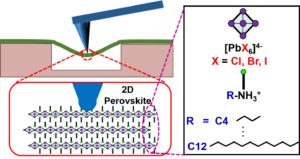
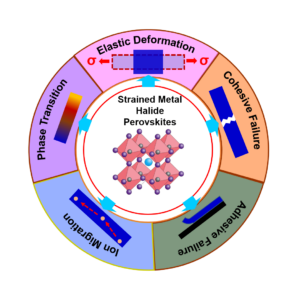
2020
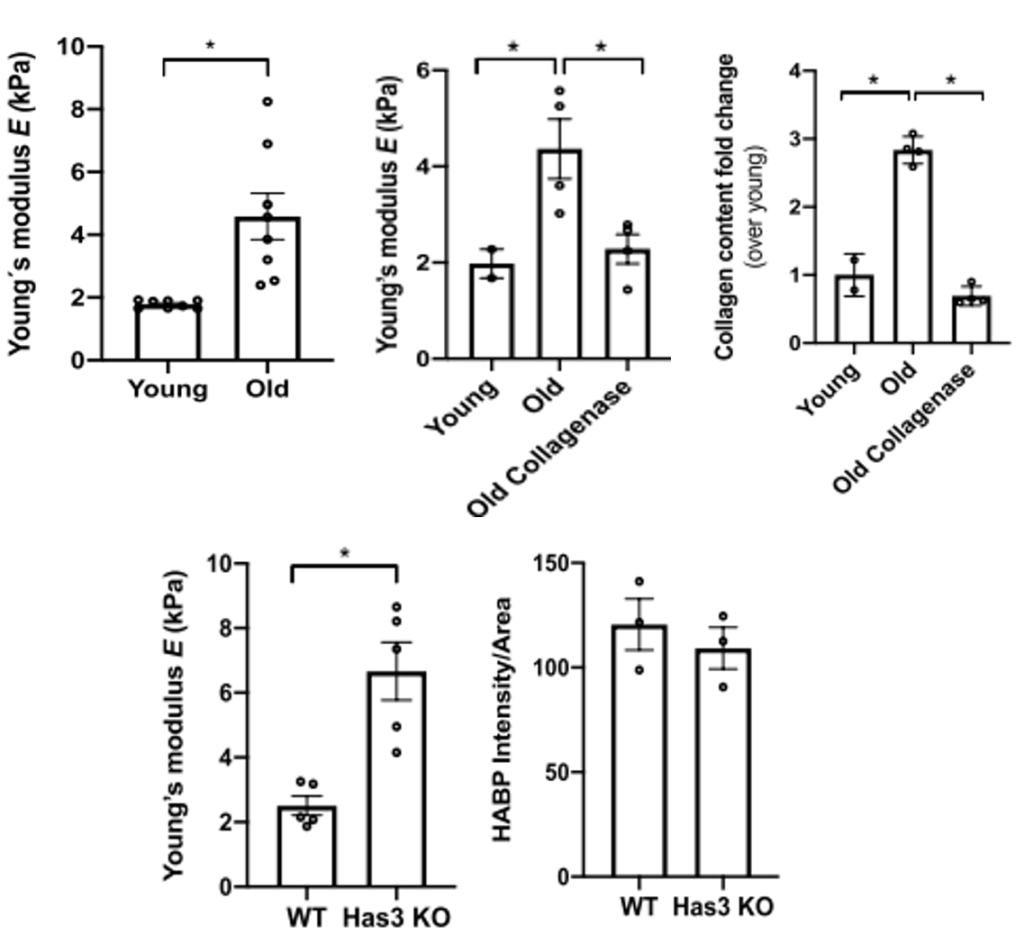
[19] Qing Tu,* Ioannis Spanopoulos, Eugenia S. Vasileiadou, Xiaotong Li, Mercouri G. Kanatzidis, Gajendra S. Shekhawat,* and Vinayak P. Dravid,* “Exploring the Factors that Influence the Mechanical Properties of 2D Hybrid Organic-Inorganic Perovskites”, ACS Applied Materials & Interfaces, 2020, 12, 18, 20440–20447. Here we reported a systematic study of the influences of each compositional factor on the out-of-plane mechanical properties of 2D hybrid organic-inorganic perovskites to elucidate the structure-property relationship of this emerging family of layered semiconductors.
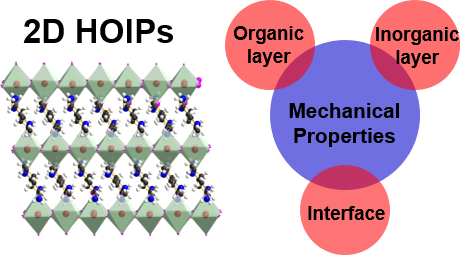
[18] Xianbiao Fu, Xingang Zhao, Xiaobing Hu, Yanan Yu, Tao Li, Qing Tu, Ryann M. Young, Michael R. Wasielewski, and Yijin Kang,* “Alternative Route for Electrochemical Ammonia Synthesis by Reduction of Nitrate on Copper Nanosheets”, Applied Materials Today, 2020, 19, 100620. We propose an efficient and clean avenue for ammonia synthesis, via electroreduction of nitrate which could be obtained from industrial wastewater, domestic sewage, sodium nitrate ore, and nitrification of bacteria and electrochemical oxidation of nitrogen, which addresses the water pollution issues and simultaneously upgrades the nitrate to high-value ammonia. The ammonia formation rate achieved by the copper nanosheets here is more than two orders of magnitude higher than electrochemical nitrogen reduction reaction to ammonia.
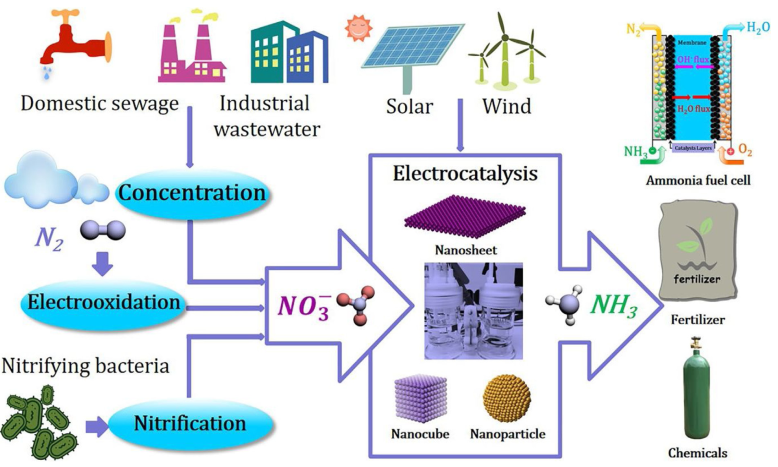
[17] Xiang Gao, Yuanwen Jiang, Yiliang Lin, Kyoung-Ho Kim, Yin Fang, Jaeseok Yi, Lingyuan Meng, Hoo-Cheol Lee, Zhiyue Lu, Owen Leddy, Rui Zhang, Qing Tu, Wei Feng, Vishnu Nair, Philip J. Griffin, Fengyuan Shi, Gajendra S. Shekhawat, Aaron Dinner, Hong-Gyu Park*, and Bozhi Tian*, “Structured Silicon for Revealing Transient and Integrated Signal Transductions in Microbial Systems”, Science Advance , 2020, 6(7), eaay2760. We developed multiscale and structured silicon (Si) materials as nongenetic optical transducers capable of modulating the activities of both single bacterial cells and biofilms at high spatiotemporal resolution. We captured a new form of rapid, photothermal dependent, intercellular calcium signaling within the biofilm. We also found an unexpected coupling between calcium dynamics and biofilm mechanics, which could be of importance for biofilm resistance.
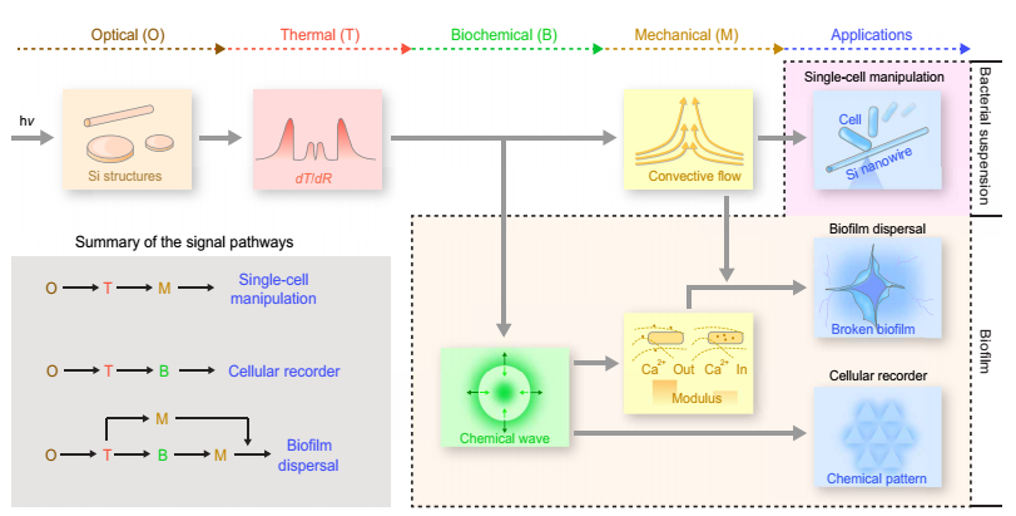
[16] Qinghui Guo, Manping Jia, Zhichang Liu, Yunyan Qiu, Hongliang Chen, Dengke Shen, Xuan Zhang, Qing Tu, Matthew R. Ryder, Haoyuan Chen, Peng Li, Yaobin Xu, Penghao Li, Gajendra S. Shekhawat, Vinayak P. Dravid, Randall Q. Snurr, Douglas Philp, Fehaid M. Alsubaie, Omar K. Farha, Marco Rolandi, and J. Fraser Stoddart, “Single-Crystal Polycationic Polymer Obtained by Single-Crystal-to-Single-Crystal Photopolymerization”, Journal of the American Chemical Society, 2020, 142, 13, 6180–6187. We reported an efficient way to prepare large quantity, highly ordered single crystalline polycationic polymers by utilizing sunlight-induced topochemical polymerization. The resulted material exhibits extraordinary mechanical properties, environmental stability, and proton conductivity. It is my great honor to collaborate with Nobel Prize Laureate, Sr. J. Fraser Stoddart.
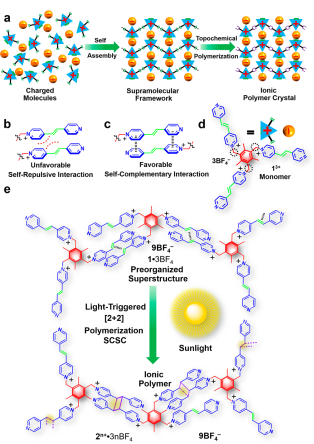
2019
[15] Weijun Ke, Ioannis Spanopoulos, Qing Tu, Ido Hadar, Xiaotong Li, Gajendra S. Shekhawat, Vinayak P. Dravid, and Mercouri G. Kanatzidis*, Ethylenediammonium Based “Hollow” Pb/Sn Perovskites with Ideal Bandgap Yield Solar Cells with Higher Efficiency and Stability”, Journal of the American Chemical Society, 2019, 141(21), 8627 – 8637. Here we demonstrate the application of a mixed Pb/Sn-based perovskite with oversized ethylenediammonium dications for stable, high performance and environmentally friendly solar cell application. The resulted Pb/Sn film features massive Pb/Sn vacancies, reducing the amount of toxic Pb used in the film and lowering band gap than pure Pb-based perovskites (thus wider absorption range of the solar spectra). The solar cell operation stability is also significantly improved.
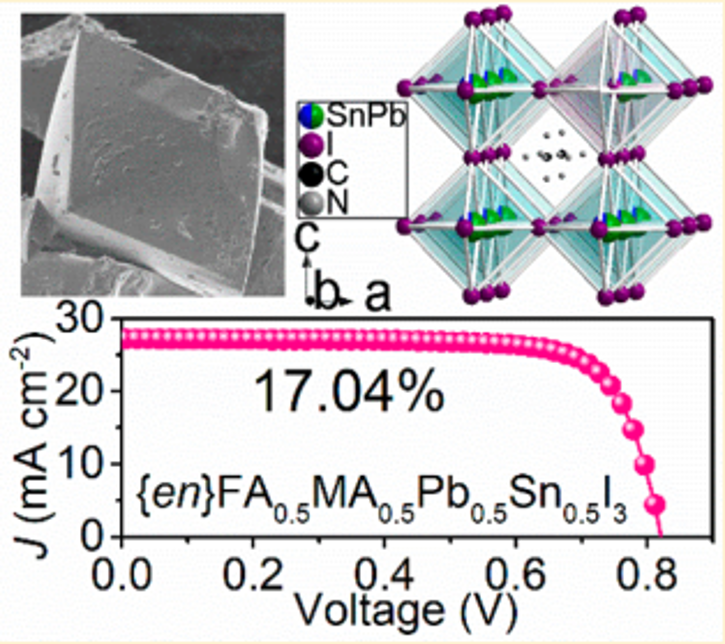
[14] Ioannis Spanopoulos, Ido Hadar, Weijun Ke, Qing Tu, Michelle Chen, Hsinhan Tsai, Yihui He, Gajendra Shekhawat, Vinayak Dravid, Michael Wasielewski, Aditya Mohite, Constantinos Stoumpos,* and Mercouri Kanatzidis*, “Uniaxial Expansion of the 2D Ruddlesden-Popper Perovskite Family for Improved Environmental Stability”, Journal of the American Chemical Society, 2019, 141(13), 5518 – 5534. We create two new series Pb-I 2D Ruddlesden-Popper Perovskite family based on pentylamine and hexylamine. A comprehensive characterization of the structure and physical properties of homologous crystals of these new 2D RP perovskites is reported, which are compared to the results from butylamine analogs.
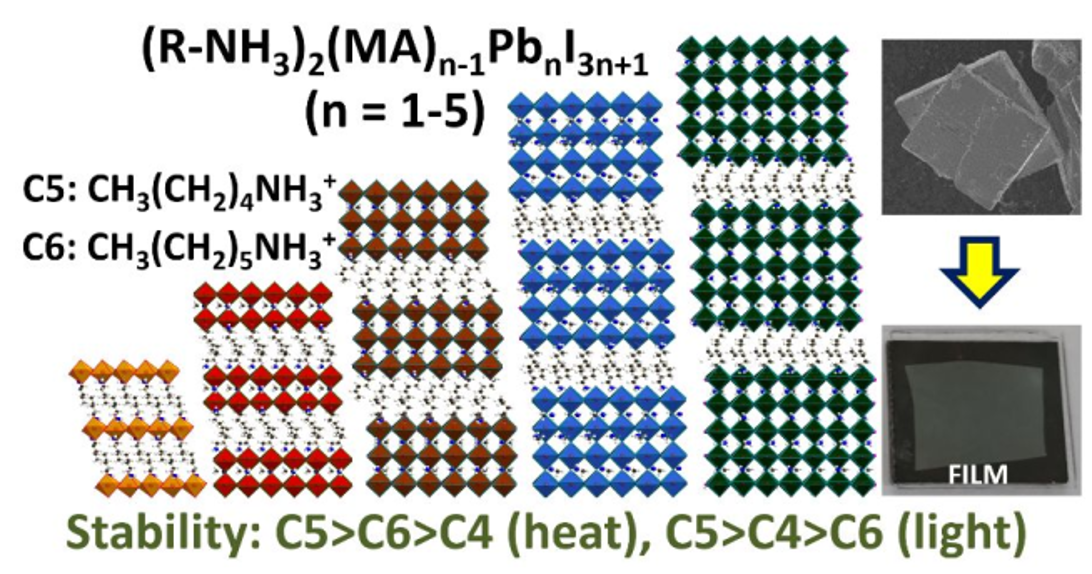
[13] Wesley Luc,ǂ Xianbiao Fu,ǂ Jianjian Shi, Jing-Jing Lv, Matthew Jouny, Yaobin Xu, Qing Tu, Jinsong Wu, Qin Yue, Yuanyue Liu, Yijin Kang,* Feng Jiao,* “Two-Dimensional Copper Nanosheets for Electrochemical Conversion of CO to Acetate”, Nature Catalysis, 2019, 2, 423 – 430 (Front Cover). This work reports a facile method synthesizing 2D copper nanosheets, which achieved unprecedented Faradaic Efficiency of converting CO to Acetate electrochemically.
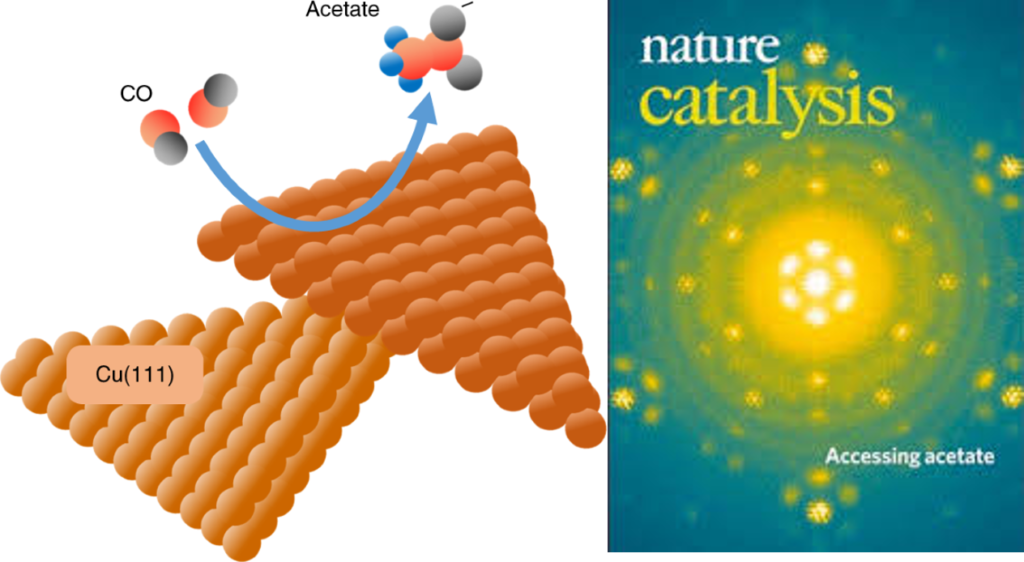
[12] Poya Yasaei, Qing Tu, Yaobin Xu, Louisiane Verger, Jinsong Wu, Michel W. Barsoum, Gajendra S. Shekhawat,* Vinayak P. Dravid,* “Mapping Hot-Spots at Heterogeneities of Few-Layer Ti3C2 MXene Sheets”, ACS Nano, 2019, 13(3), 3301 – 3309. In this paper, we utilized scanning thermal microscopy, a nondestructive scanning probe-based thermometry with high temperature (0.05 C) and lateral (<20 nm) resolution, and uncovered the defects’ (wrinkle, folds, cracks, and heterojunctions) contribution to local heating in MXene based devices.

[11] Qing Tu, Ioannis Spanopoulos, Costas Stoumpos, Mercouri G. Kanatzidis, Gajendra S. Shekhawat,* Vinayak P. Dravid,* “Probing Strain-Induced Band Gap Modulation in 2D Hybrid Organic-Inorganic Perovskites”, ACS Energy Letters, 2019, 4(3), 796 – 802. This paper reports that uniaxial strain could induce enlarge the band gap of high n-number 2D HOIPs (n>3), but not low in low n number cases. The strain-induced band gap change is reversible and mainly due to the bond strength and bond angle change in the inorganic Pb-I framework in the 2D HOIPs.
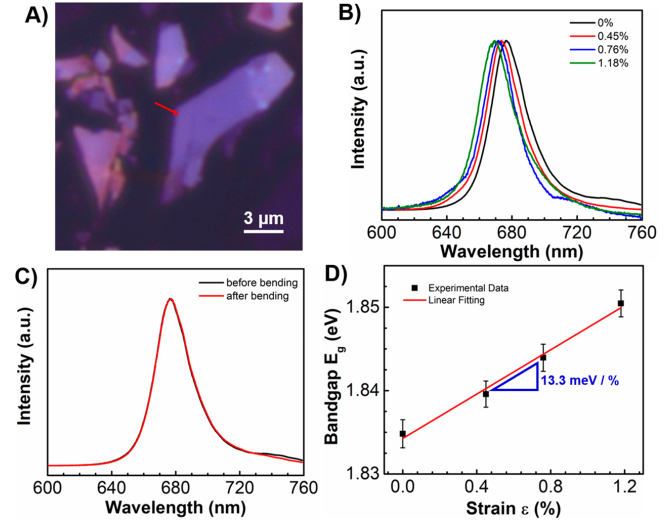
2018
[10] Qing Tu, Ioannis Spanopoulos, Poya Yasaei, Costas Stoumpos, Mercouri G. Kanatzidis, Gajendra S. Shekhawat,* Vinayak P. Dravid,* “Stretching and Breaking of Ultrathin 2D Hybrid Organic-Inorganic Perovskites”, ACS Nano, 2018, 12 (10), 10347 – 10354. In this paper, we reported the first study of the in-plane mechanical properties of a prototypical 2D hybrid organic-inorganic perovskite (HOIP). We mechanical exfoliated ultrathin 2D HOIP flakes onto silicon substrates with holes to create suspended membranes and indented the membrane by AFM probe to extract Young’s modulus and strength of the membranes as a function of membrane thicknesses.
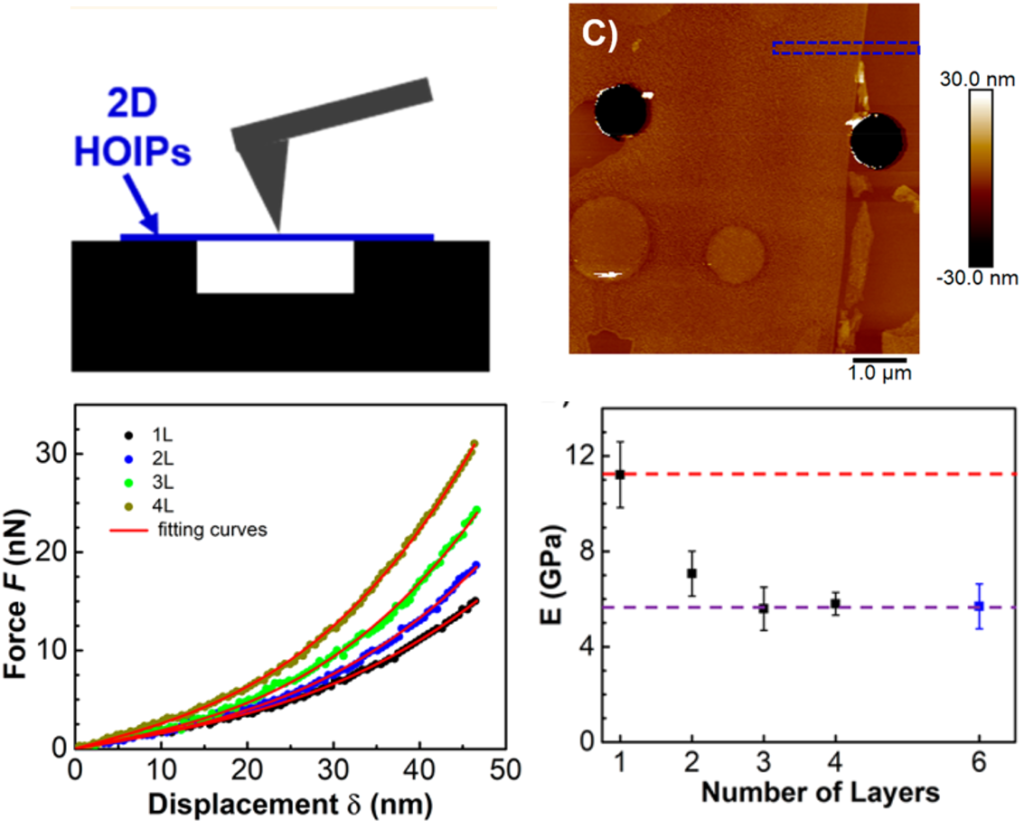
[9] Qing Tu, Ioannis Spanopoulos, Shiqiang Hao, Christopher Wolverton, Mercouri G. Kanatzidis, Gajendra S. Shekhawat,* and Vinayak P. Dravid,* “Out-of-Plane Mechanical Properties of 2D Hybrid Organic-Inorganic Perovskites by Nanoindentation”, ACS Applied Materials & Interfaces, 2018, 10 (26), 22167 – 22173. This paper reports the first study of the mechanical properties of 2D hybrid organic-inorganic perovskites (HOIPs). We measured the out-of-plane elastic modulus and hardness along the out-of-plane directions and unveiled the structural influences on these properties.
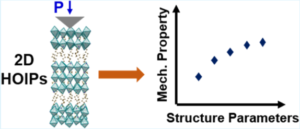
[8] Stacey A. Maskarinec, Zehra Parlak, Qing Tu, Vrad Levering, Stefan Zauscher, Gabriel Lopez, Vance G. Fowler, John R. Perfect,* “On Demand Release of Candida Biofilm from Urinary Catheters by Mechanical Surface Deformation”, Biofouling, 2018, 34 (6), 595 – 604. This paper reports harnessing the mechanical surface deformation to effectively release the C. alciban bacteria films from a soft urinary catheter.
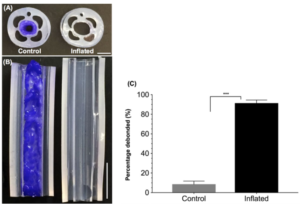
[7] Linying Li, Nan K Li, Qing Tu, Owen Im, Chia-Kuei Mo, Wei Han, William H. Fuss, Nick Carroll, Ashutosh Chilkoti, Yaroslava G. Yingling, Stefan Zauscher,* and Gabriel P. López,* “Peptide-based Functional Film: Enhanced Adsorption of Elastin-like Polypeptide Block Copolymer on Silica”, Biomacromolecules, 2018, 19(2), 298 – 206. This paper reports the adsorption behavior of genetically engineered elastin-like polypeptide with and without specfic binding domains onto silica surfaces at various temperatures.

Prior to 2018
[6] Kezhao Du,ǂ Qing Tu,ǂ Xu Zhang, Qiwei Han, Jie Liu, Stefan Zauscher, David Mitzi,* “Two-Dimensional Lead(II)-Halide-Based Hybrid Perovskites Templated by Acene Alkylamines: Crystal Structures, Optical Properties and Piezoelectricity”, Inorganic Chemistry, 2017, 56, 9291-9302. We systematically investigated the impact of acene alkylamine spacer molecules on the structure, optical and electromechanical properties of 2D metal-halide perovskites.
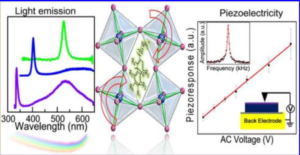
[5] Qing Tu,ǂ Hoshin Kim,ǂ Thomas Oweida, Zehra Parlak, Yaroslava Yingling, and Stefan Zauscher,* “Interfacial Mechanical Properties of Graphene on Self-Assembled Monolayers: Experiments and Simulations”, ACS Applied Materials & Interfaces, 2017, 9(11), 10203-10213. This paper reports the interfacial mechanics between graphene and self-assembled monolayers (SAMs) is largely modulated by the surface energy of the SAM due to the amount of water molecules present at the interfaces and associated SAM packing change.
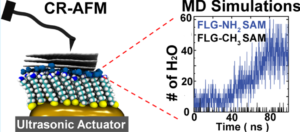
[4] Qing Tu,ǂ Bjoern Lange,ǂ Zehra Parlak, Joao Marcelo Lopes, Volker Blum* and Stefan Zauscher,* “Quantitative Subsurface Atomic Structure Fingerprint for 2D Materials and Heterostructures by First-Principles-Calibrated Contact-Resonance Atomic Force Microscopy”, ACS Nano, 2016, 10 (7), pp 6491–6500. This paper developed a first-principles-calibrated contact resonance AFM technique that can non-destructively, quantitatively detect the mechanical property change arising from one atomic layer and correlated it to the underlying atomic structure.
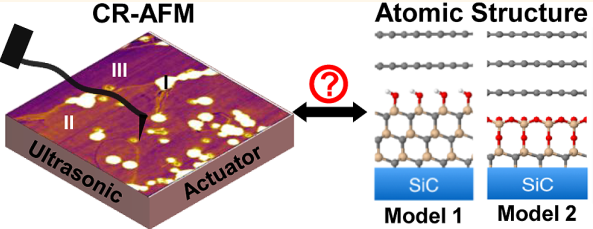
[3] Zehra Parlak, Qing Tu, Stefan Zauscher,* “Liquid Contact Resonance AFM: Analytic Models, Experiments, and Limitations”, Nanotechnology, 2014, 25, 445703. This paper utilizes electromagnetic actuation to achieve clean ultrasonic driving of the AFM cantilever for quantitative nanomechanical characterization in liquid environments. The technique and the quality of data we could achieve is still considered as state-of-the-art even 7 years later.
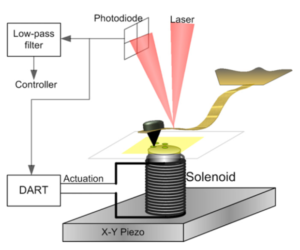
[2] Stefan Zauscher,* Zehra Parlak, Qing Tu, “Mapping the Stiffness of Nanomaterials and Thin Films by Acoustic AFM Techniques”, in: Handbook of Nanomaterials Properties, Bharat Bhushan (ed.), Springer-Verlag Berlin Heidelberg 2014. This book chapter summarizes dynamic AFM techniques that harness ultrasonic vibration to achieve unprecedented nanomechanical characterizations.
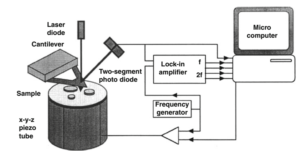
[1] Jianfeng Zang, Seunghwa Ryu, Nicola Pugno, Qiming Wang, Qing Tu, Markus J. Buehler, Xuanhe Zhao,* “Multifunctionality and Control of the Crumpling and Unfolding of Large-area Graphene”, Nature Materials, 2013,12, 321 (Media Coverage: Duke Pratt News, ScienceWorld Report, AZONano, MRS Materials 360, and Seeker). This paper reports utilizing the mechanical instability of graphene sheets to achieve multifunctionality for flexible electronics and artificial muscle applications.
